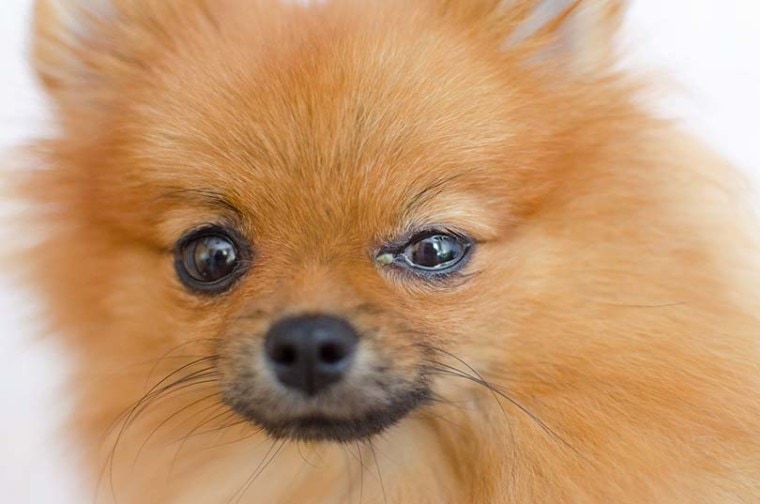
Eye boogers and discharge are common problems that many dogs face. Although all dogs will face eye boogers at one point or another, certain breeds are more susceptible to eye discharge than others.
If you’re wondering ‘why do dogs get eye boogers?’, there are several possible reasons for them, some being short-term, and others being very serious. Knowing why your dog has eye boogers can help you treat the issue and protect your dog’s health in the long run.
The 9 Reasons For Dog Eye Boogers
1. Allergies
Even though dogs are apex predators, they still suffer from allergies just like us. Whether it be pollen or dust, allergies can cause your dog’s eyes to water clear discharge. If your dog’s eyes water for several days and in between sleep, the watery eyes can cause boogers and eye goop to form.
Often, watery eyes won’t be the only symptoms to look out for if your dog is suffering from allergies. The dog may experience itching, runny nose, and light respiratory issues as well, such as sneezing.
What to Do About It
If you notice that your dog’s boogers are caused by clear discharge, it’s a good idea to start treating your dog for allergies1. Visit your vet to discuss treatment options. Most likely, your vet will prescribe some corticosteroid or antihistamine. If your dog’s skin is specifically inflamed, you might want to try hypoallergenic, gentle shampoo.
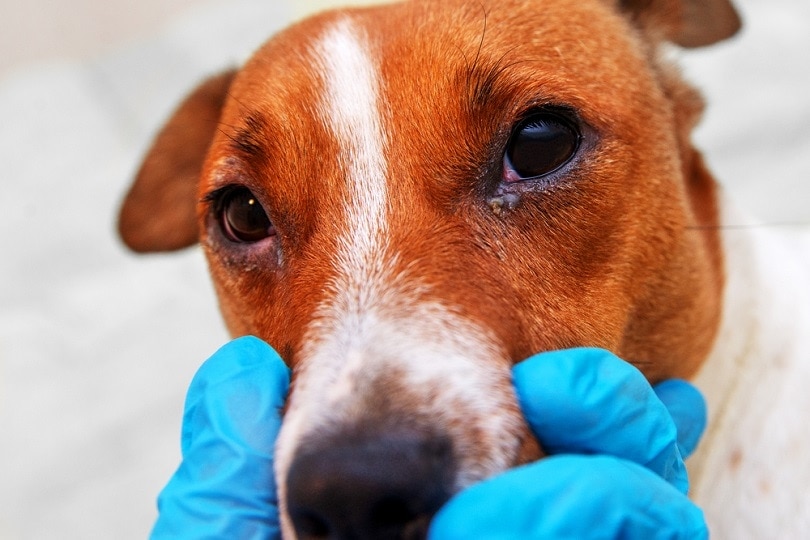
2. Wind
If you have ever stood outside for a long time in the cold or wind, you know that cold weather and intense wind can cause eyes to water and develop boogers. The same is true for your dog. If your dog has been outside for a long time, especially when it is windy and cold, boogers may develop.
What to Do About It
Boogers caused by the wind can be treated easily. Do not leave your dog outside for too long if it is particularly cold and windy. When you bring your dog back in, wipe down its eyes so that the clear discharge doesn’t turn into boogers.2
3. Eyelash or Other Irritant
Eyelashes and other irritants can get into your dog’s eyes. Unlike us, dogs have trouble getting items out of their eyes because of their claws. Whenever an irritant gets into your dog’s eye, the affected eye will start tearing up, but the other eye will remain normal.
If the tears are not able to remove the debris from the eye, your dog’s eye will continually tear up until the item is removed. In the meantime, boogers and other goo can build up as a result.
What to Do About It
Most of the time, the tears will remove the debris for you. Once the eye stops watering, wipe done the dog’s face with a gentle cloth to remove any excess and prevent boogers from building up. If the dog is still showing signs that something is in its eye, you can try to gently flush your dog’s eye or take it to the vet.3

4. Dry Eyes
Although it may sound odd, dry eyes can cause eye boogers. If your dog cannot produce enough tears, a thick eye discharge may come as a result. Your dog may be suffering from dry eyes because of allergies, ulcers, or infections.
What to Do About It
If you think your dog has dry eyes but the condition does not seem severe, you can try putting your dog on antibiotics and using artificial tears. This may relieve the dry eyes and get your dog’s tear ducks in working condition again.
Take your dog to the vet if the condition persists or the dry eye condition seems serious. For more serious conditions, you may need to get antibiotic eye drops, immunosuppression drugs, or even surgery.
5. Conjunctivitis
Conjunctivitis is a type of inflammation that occurs on the lining of your dog’s eye. Many things can cause conjunctivitis, including uncontrolled allergies, dry eye, or distemper. Conjunctivitis looks different than eye discharge caused by allergies and other minor issues. Instead of looking clear and watery, it will often look like mucus or have yellow-green colored pus.
Some other signs of conjunctivitis include inflammation, frequent blinking, red eyes, excessive squinting, crusty eyes, and excessive pawing at the eyes.
What to Do About It
Take your dog to the vet if you suspect conjunctivitis. Your vet will be able to diagnose the cause for the conjunctivitis. Knowing what is causing the issue is how you fix it. If severe allergies are causing the conjunctivitis, your vet may prescribe antibiotics or an antihistamine, but your dog may have to undergo surgery for more serious cases.
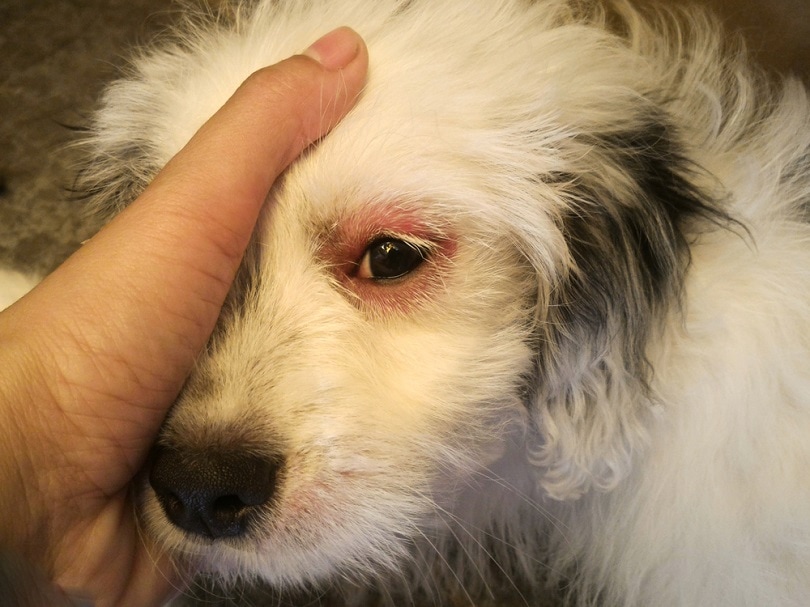
6. Corneal Ulcers
A corneal ulcer happens whenever trauma has occurred to the cornea. Lack of tears, disease, or injury can cause the ulcer. Corneal ulcers look different than conjunctivitis because the eyes will look red and watery. More so, the dog will be sensitive to light, excessively paw at their eyes, and have a film over the eyes.
What to Do About It
Medical treatment is required if corneal ulcers are to blame for your dog’s eye boogers. You will need to take your dog to the vet so that your vet can come up with an effective treatment strategy. Often, the treatment includes antibiotics, anti-inflammatories, and sometimes surgery.
7. Epiphora
Epiphora is a fancy word for excessive tearing. Often, excessive tearing causes intense boogers, stained fur, smelly fur, and infected skin. Certain breeds are more susceptible to epiphora than others. Several conditions can lead to up epiphora, including allergies, abnormal eyelashes, tumors, and corneal ulcers.
What to Do About It
Because epiphora can have such serious causes, take your dog to the vet to rule out cancer and corneal ulcers as the cause. Most often, the vet will prescribe allergy medication, antibiotics, and steroids. In severe cases, the dog may need to have surgery.
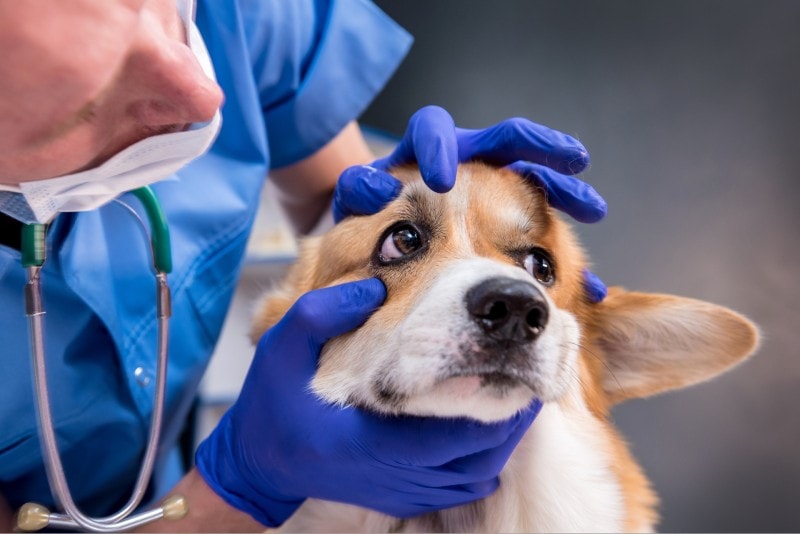
8. Glaucoma
Glaucoma is a serious condition that can lead to blindness. It is caused whenever there is excessive pressure on the eye. Symptoms of glaucoma include bulging eyes, cloudy eyes, and tearing.
What to Do About It
Glaucoma is a highly serious condition for both dogs and humans alike. Take your dog to the vet immediately if you suspect glaucoma is an issue. Your vet will likely prescribe medication for pressure management, but surgery is often the most effective method.
9. Breed
Some dogs are simply more prone to eye conditions than others. Flat-faced dogs, such as pugs for instance, often get a lot of eye discharge because they have smaller eye sockets with protruding eyes. Similarly, dogs with prominent eyes often have tear drainage problems, eyelash irritation, and other vision issues. Even dogs with loose facial skin can have outward rolling eyelids and cherry eye.
All these conditions lead to watering eyes and eventually boogers.
What to Do About It
If your dog’s breed is to blame for its boogers, it’s important to be diligent in providing your dog with good hygiene. Try to wipe down your dog’s eyes gently with a washcloth every night. That way, the discharge doesn’t build up or lead to more serious issues down the line.
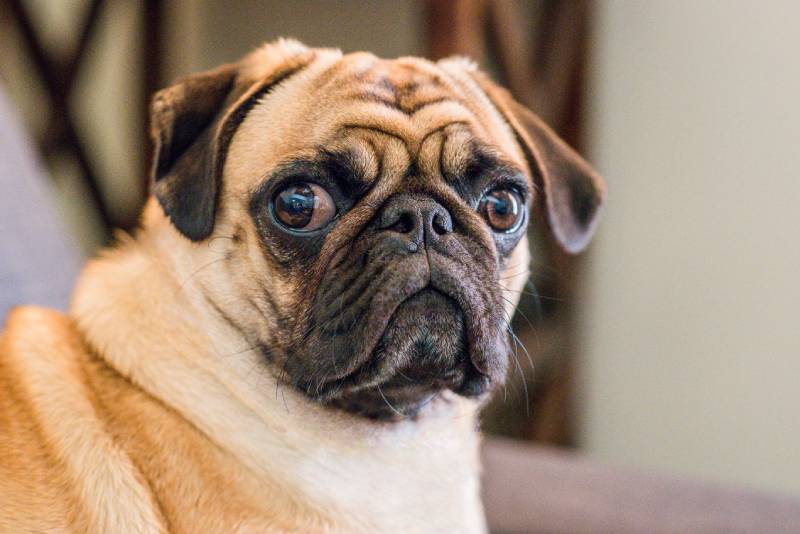
How to Prevent Dog Eye Boogers
Most eye boogers can be prevented with good hygiene and grooming. Some dogs will be able to take care of their eyes on their own, but others may need a bit more help. If you notice that your dog’s eyes are watering a lot, gently wipe them down using a moist cloth.
Additionally, make sure that the fur around your dog’s face is trimmed and out of the eyes. Dogs with shaggy fur and drooping skin often get irritations that fall into their eyes. Keeping their faces clean and trimmed can avoid a lot of pain down the road.
When to Call Your Vet
Although most eye boogers in dogs are nothing to worry about, you should call your vet if the eye boogers have a yellow mucus or pus-like look. Likewise, go to your vet if the eye boogers are accompanied by swollen eyes and other serious symptoms.
Final Thoughts
If you notice a booger or two in your dog’s eye, it is likely just from allergies or regular tear discharge. If the boogers are very small, relatively clear, and not accompanied by other symptoms of ocular issues, just wipe off the booger and forget about it. However, call your vet if the dog eye boogers are serious and accompanied by more symptoms.
See also:
Featured Image Credit: nadisja, Shutterstock






